Financial stocks show a reversal in sentiment
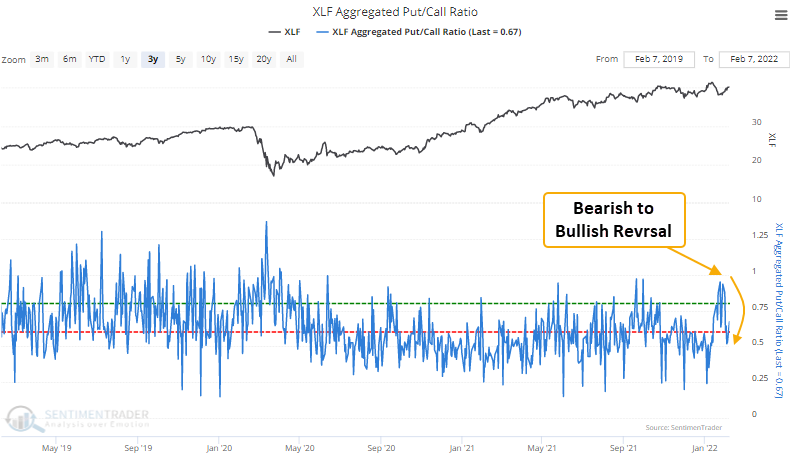
Key points:
- XLF constituent put volume increased relative to call volume
- The aggregated XLF put/call ratio has now reversed lower from an elevated level
- Financial stocks rallied 82% of the time after other signals
- The Optimism Index for the financials sector reversed higher relative to its recent range
- The financials ETF (XLF) rallied 75% of the time after other signals
The aggregated put-call ratio as a contrary sentiment indicator
When investors are bullish on stocks, they buy call options to bet on rising prices. Conversely, when they are bearish on stocks, they purchase put options to bet on declining stocks. The put/call ratio can be used as a contrary indicator to identify an environment where sentiment has become too pessimistic on the future direction of stocks. When opinions become too bearish, stocks tend to rally.
The aggregated put/call ratio indicator measures the summed options data for constituents of the index/ETF.

A trading model that identifies a reversal in the aggregated put/call ratio
The put/call ratio trading model applies an 84-day range rank to a 4-day moving average of the XLF aggregated put/call ratio. The pessimistic reset condition is confirmed when the range rank indicator crosses the 99th percentile. A new buy signal occurs when the range rank crosses back below the 54th percentile. At the same time, the 5-day rate of change for the XLF ETF must be >= 2.5%. i.e., market momentum is positive.
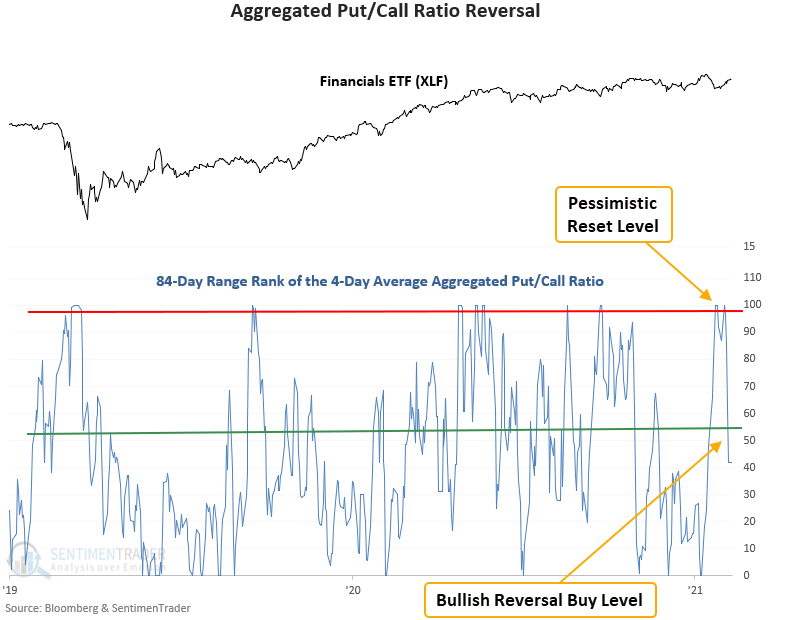
Similar reversals in the put/call ratio have preceded gains 82% of the time
This signal has triggered 11 other times over the past 8 years. After the others, XLF future returns and win rates look slightly weak in the 1-4 week time frame. The medium-term results, win rates, and z-scores look significantly better. The aggregated ETF put and call volume data are new time series with a start date in 2013. Therefore, the sample size is small.
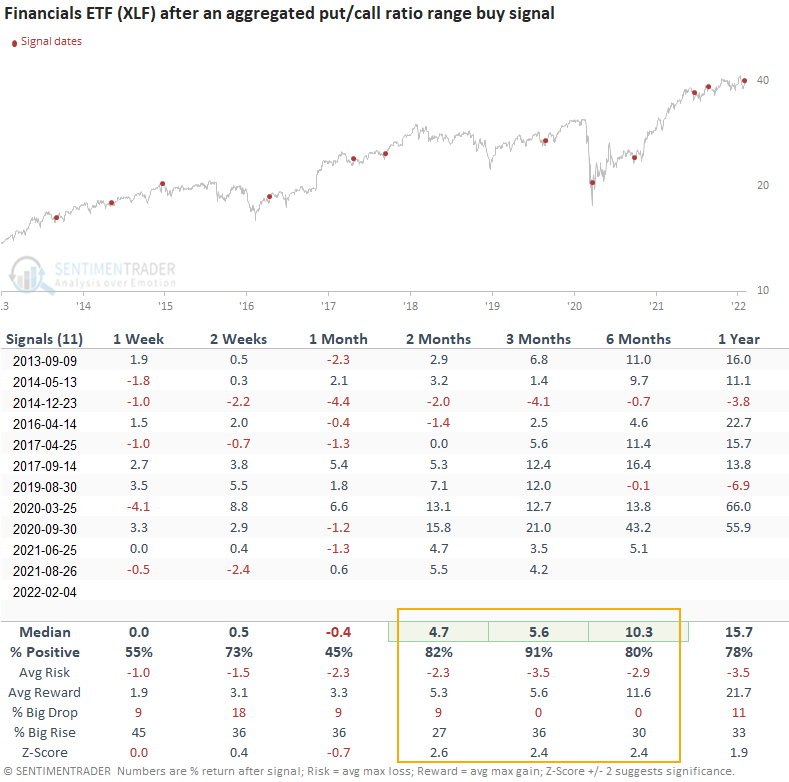
Using the Optimism Index to identify bullish sentiment reversals
A trading model that uses the Optix Index to identify when sentiment reverses from a period of pessimism issued a buy signal for the financials sector on 2/2/22.
The model applies an 84-day range rank to the 6-day moving average of the Optimism Index for the XLF ETF. As a reminder, the range rank indicator measures the current value relative to all other values over a lookback period. 100 is the highest, and 0 is the lowest. The pessimistic reset condition occurs when the range rank for the Optix Index crosses below the 5th percentile. A new buy signal triggers when the range rank crosses back above the 51st percentile. Within five days of the cross, the 5-day rate of change for the XLF ETF must be >= 2%, and the 1-day rate of change must >= 0%. i.e., market momentum is positive.
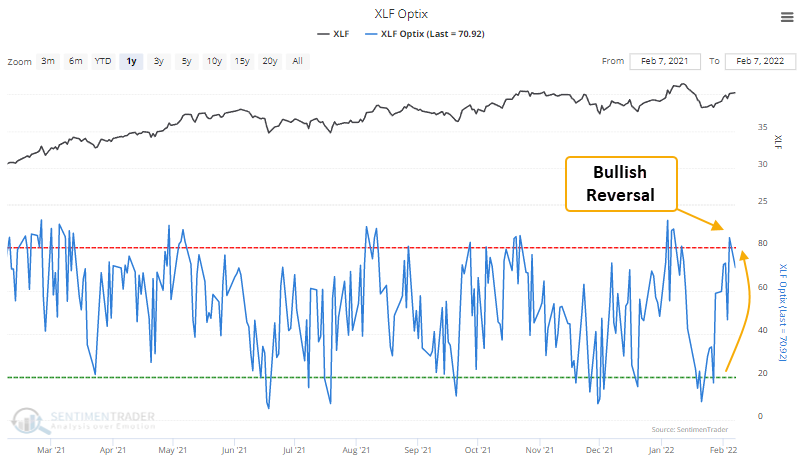
Sentiment signals work best when they reverse from an extreme
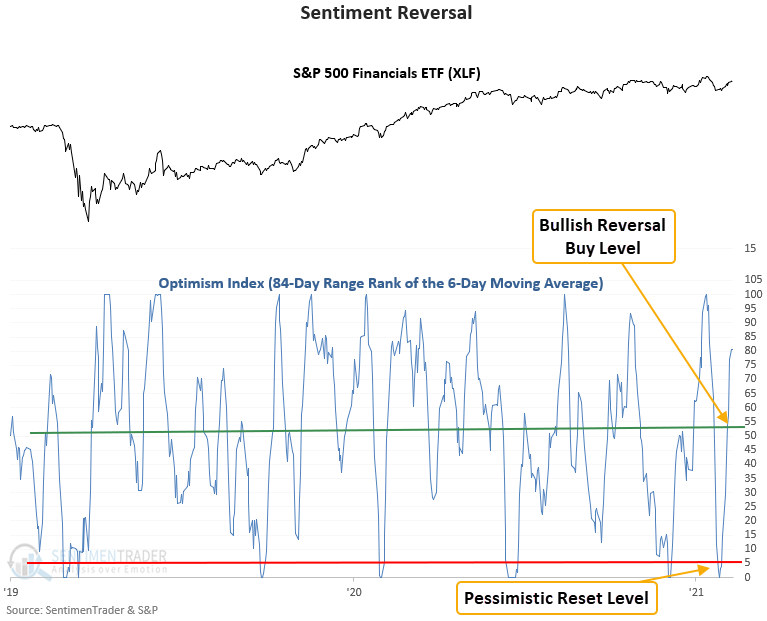
Financial stocks rallied 75% of the time after other signals
This signal has triggered 52 other times over the past 22 years. After the others, financial sector future returns, win rates, and risk/reward profiles were solid across almost all time frames. The medium-term windows look excellent, with significant z-scores in the 1-3 month range. I also like the consistency in the 3-month window, with 24 out of 29 winners since 2009.
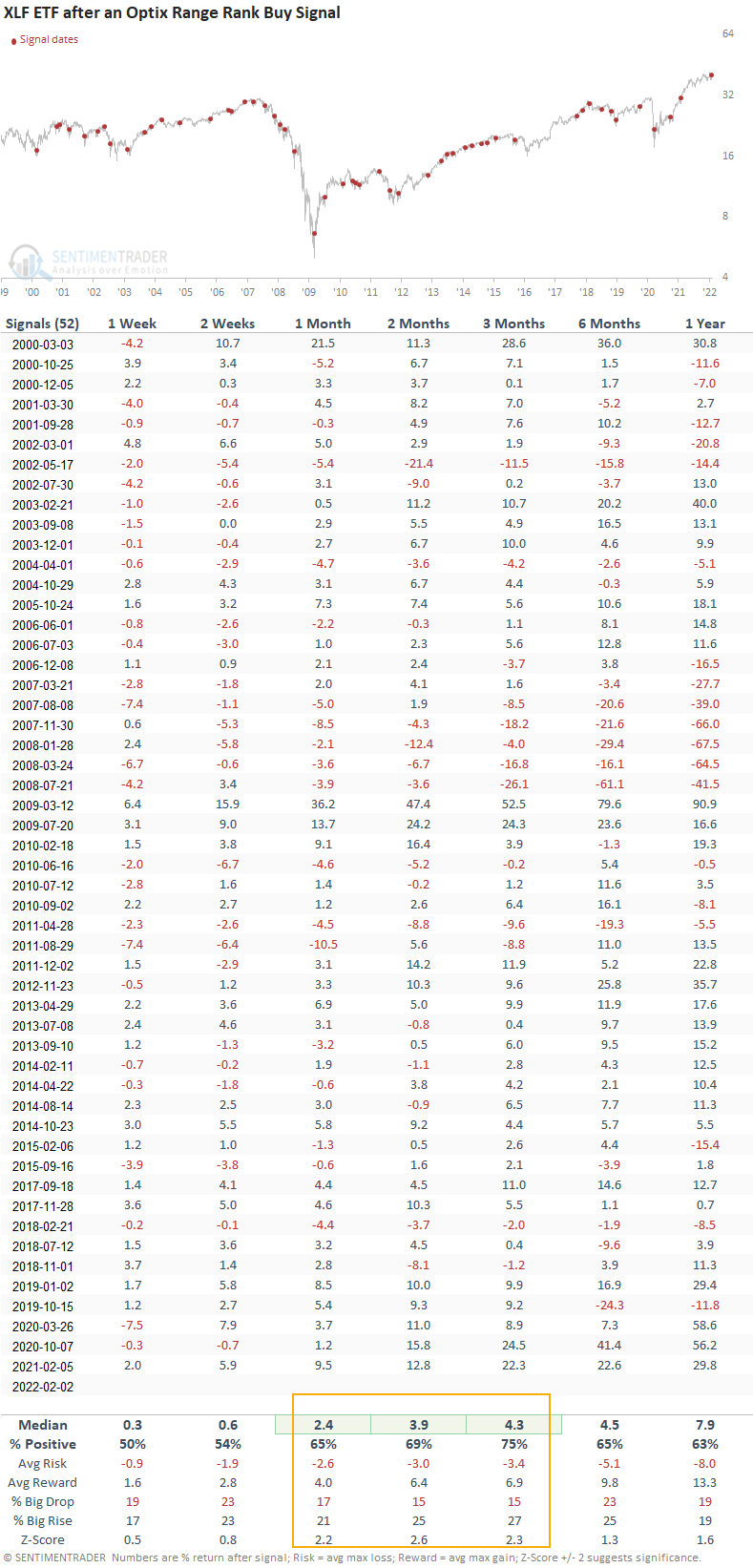
Optix signals when the XLF ETF is trading above its 200-day moving average
If I apply a trend filter to the Optix model to assess instances similar to the current one, this signal triggered 30 other times over the past 22 years. After the others, financial sector future returns, win rates, and risk/reward profiles were solid across all time frames. Comparing the two signal types shows that the trend filter instances' look more favorable in all time frames.
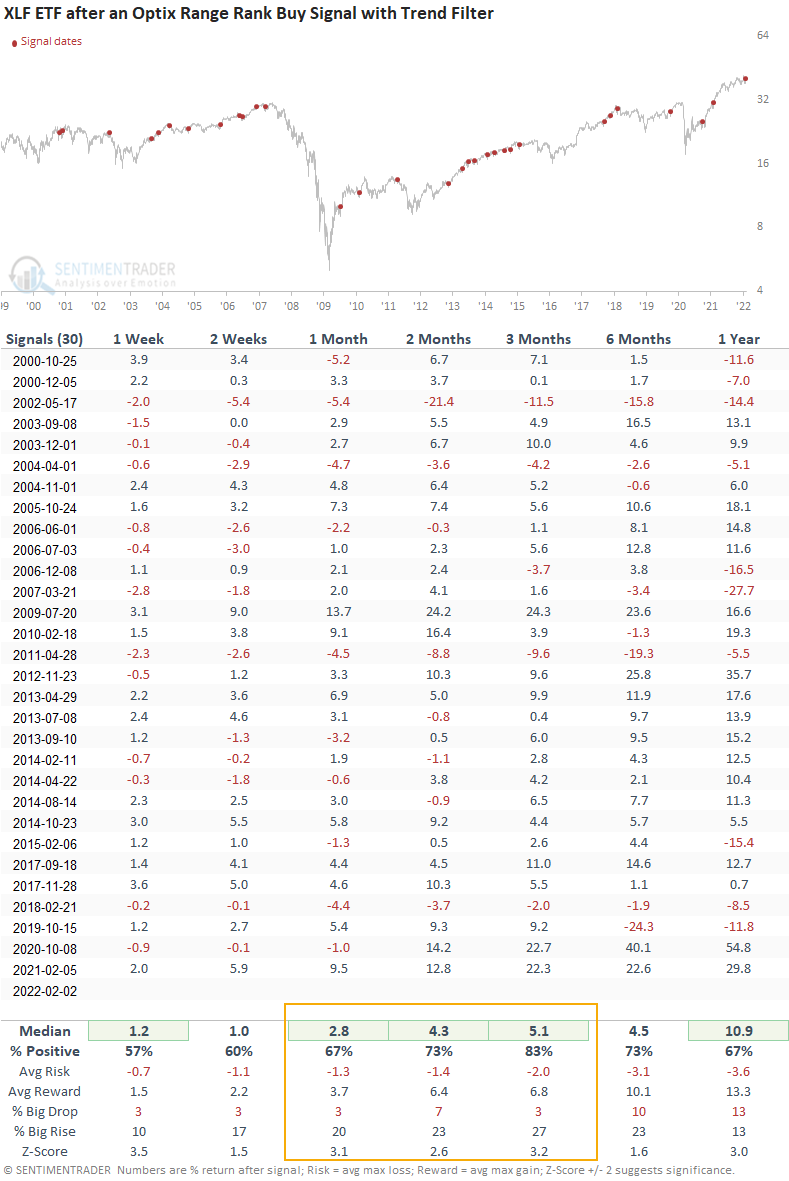
What the research tells us...
When put volume increases relative to call volume, traders have become too pessimistic on the outlook for stocks. Stocks are likely to reverse higher when the pessimistic extreme reverses. Similar setups to what we're seeing now have preceded rising prices for the financials sector ETF (XLF), with a 2-month win rate of 82%.
When the Optimism Index reverses from a pessimist level relative to its recent range, it signals that traders have become more optimistic about the future direction of financial stocks. Using the Optix index to measure that change in sentiment, similar setups to what we're seeing now have preceded rising financial sector prices, especially in the 3-month window. The results look better if I include a trend filter to identify signals similar to the current environment.

